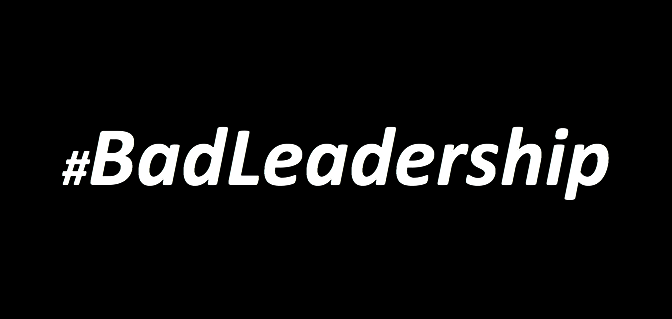Lisa Jaspers LinkedIn article struck a chord. She identified a huge issue that affects any small business IT/Development team that is tasked with BOTH maintaining existing systems as well as facilitating new product development.
In small companies, usually a single team has to do both existing system maintenance as well as new product development. This duality can create a “two warring tribes” atmosphere. And as Lisa states in her article, you can’t just add roles here and there and solve the problem.
Sometimes the warring tribes exist inside the individual as they feel pressure from both camps to do different, yet equally urgent, work. Sometimes they exist as 2 groups of developers within the same team, competing for resources, priority, or direction.
Warring Tribe #1: Maintenance Tribe
Your existing systems, software, and products carry the company. They pay the bills, enable the work, and serve the customers.
But, over time, these systems require patches, bug fixes, updates, security changes, regulatory modifications and customer feature additions. Maintenance, support, and caretaking of these systems can consume a small team.
It’s like your company is in a boat in the middle of the ocean and the boat is made up of the existing systems and products. Any leaks or issues with the boat have to be corrected quickly lest you risk the boat beginning to sink. This is existing system maintenance. Yeah, small leaks can be ignored for a while. You can hire more folks to ‘bail water’. But in most cases existing system maintenance issues will soon trump new product developer in time and dollars.
Warring Tribe #2: New Product Tribe
New product development, on the other hand, is like building a new boat, while you’re still in the old boat, without sinking either boat.
When there are existing product or system issues or urgent features needed for the paying customers, you pull your team out of the new boat and back into the old boat. When existing maintenance furor dies down the team heads back to the new product and continues on. This back and forth focus shift is more expensive than you think. It causes both tribes to suffer. And it causes the results of both tribes to suffer.
Influences on Tribal membership
When I was a developer, getting picked to go build the “new thing” was special. It was like getting drafted in the NFL. Or like getting asked to the prom by someone you really liked. You were desired and worthy of helping accomplish an important initiative for the company. Getting “left behind” to continue to maintain systems was not as desirable. You got to sit out the prom. No dancing for you.
However, for others, who had key hands in building an existing system, they wanted to stay behind and continue to nurture their ‘baby’. They had little desire to go and build something new.
In a large company setting, an engineer may get the flexibility to choose. And some engineers can do either. But in a small company setting, you don’t always get that choice.
The same tension between doing something new, or staying behind and shepherd something current, also affects project managers, QA folks, DBA, system admins and other roles within the team.
Ways to make peace
1. The two team approach
If you have enough resources you can divide and conquer to some extent. Pick those who want to go and help out with the new thing and allow them to focus on that exclusive, leaving those in favor of maintaining the existing systems in place.
I have seen this method work well. Small, competent, focused teams can make progress very quickly. In the end, this is probably the most desired approach as Lisa Jasper shares, “because product development is such a different mindset“. A dedicated team can focus on new tools, new processes, different vendors and the different mindset needed for new product development without distraction.
2. Bring in the reinforcements
Another approach, if your new product development takes too many of your resources is to strategically contract for necessary bug fixes and feature work on existing systems. Using this approach can help minimize cost, focus effort on only the most important issues and help keep you from ‘gilding the lily’ on existing system improvements.
If your existing systems have a lot of baked in technical debt the outside, tactical contractor engagement may not make sense. The success of this approach hinges on finding a reliable contractor who is familiar with your tools/framework/languages or systems. If this is the case then tactical contractor engagements can be very useful.
The success of this approach hinges on finding a reliable contractor who is familiar with your tools/framework/languages or systems. If this is the case then tactical contractor engagements can be very useful.
3. Bring in another army
If your team is small and they don’t have the experience or knowledge in the domains of the new product then you can consider outsourcing the new product development.
In one engagement, in the earlier days of the app store, our team was building and maintaining web applications and needed an iPhone app built. Our team knew databases and the languages and frameworks we used but none of us had any real experience with iOS or ObjectiveC. So after some research and comparison shopping, we went with a third party company that specialized in mobile app development to develop the app for us. If your new product need is specific enough this method can work well.
If your new product need is specific enough this method can work well.
4. Refactor
Another approach that is not as glamorous, is to refactor existing products. This is especially true in software. In software, refactoring refers to the process of re-structuring software code to improve its operation and add or take advantage of new features that could not be done in the prior state.
If your new product needs can be broken down into smaller more atomic features, it may be possible to use your existing team and refactor your current product to add certain aspects of what a new product would bring. In the end, this may be a less costly approach overall and bring incremental improvements online faster.
Pass the peace pipe
There is no one size fits all solution.
Each company and situation are different.
By taking the time to contemplate some of these options you may be able to come up with a new and creative approach that will enable you to deliver a great solution within the constraints of your team and budget. The strengths of your team, time to market needs and existing product structure all influence this type of decision.
But in the end, recognize the pulling forces between the two tribes and the different mindset required for new product development. If you do this you are well on your way to a more successful engagement.








